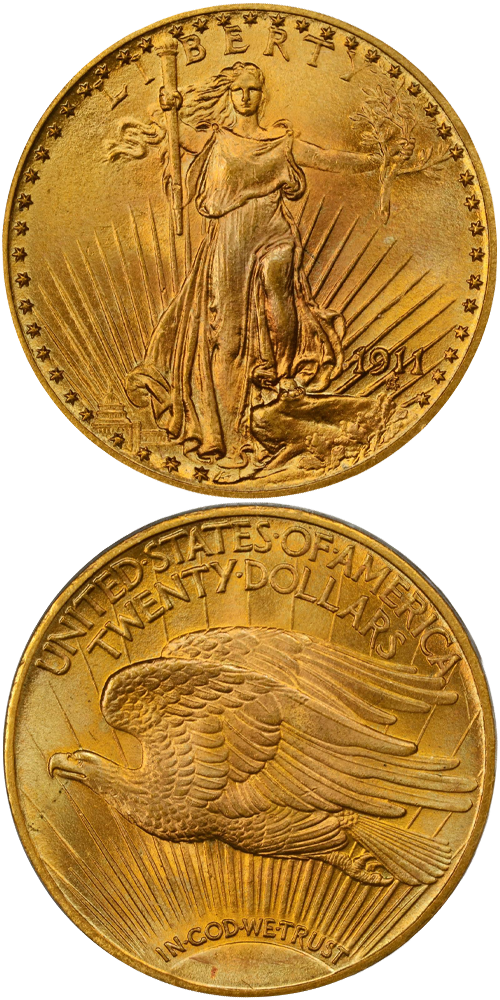1911 Saint Gaudens Double Eagle
Business Strike:
Produced to the extent of just 197,250 circulation strikes, the 1911 is one of the scarcest early date issues in the Saint-Gaudens double eagle series. Most Uncirculated survivors grade no finer than MS-64, and many have inferior eye appeal due to subdued, lackluster surfaces.
Proof Strike:
Of the 1911 Proof double eagle only 100 were made. The Mint called these Sand Blast Proofs at the time, but collectors generally refer to them as matte. They were fashioned by taking a 1911 twenty carefully struck on a hydraulic medal press and blasting it with a stream of tiny sand particles. This process was popularized at the Paris Mint in the 1890s and attracted the attention of artists and medalists in America, inspiring the Mint to use it for certain products such as Assay Commission medals.
As desired as Sand Blast Proofs are by today's discerning numismatists, in their era they were not widely sought by collectors. Either not all of the 100 pieces struck were distributed, or most were later spent. John W. Dannreuther (2018) estimates that no more than 75 of the 1911 date survive today. Proof gold double eagles had little resale value and both B. Max Mehl and Henry Chapman stated that as they could only be sold for $21 or so, they often turned them into the banks! Incredible to contemplate today. (Mehl once told Dave Bowers that he was in the dining car of a train, had left his wallet in the sleeping car, so spent a Proof Barber half dollar he had in his pocket).
In his May 1915 sale of the B.W. Smith Collection Mehl offered lot 13: "1911 Sandblast Proof. Very scarce, as but few Proofs were struck." It realized $20.60.
Beginning in a very significant way in the 1970s, the long-overlooked Sand Blast Proofs achieved great market demand, which has continued ever since.
The example to the left was sold by Stack's Bowers Galleries in the August 2023 Global Showcase Auction, where it realized $162,000.






